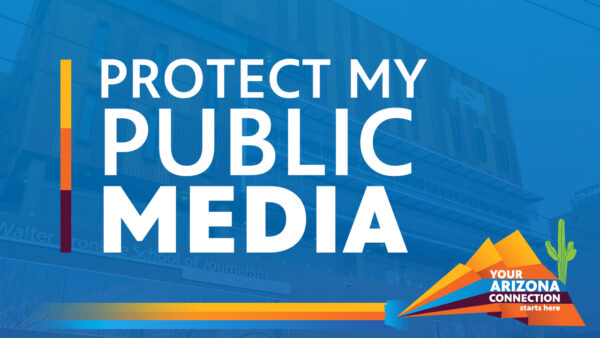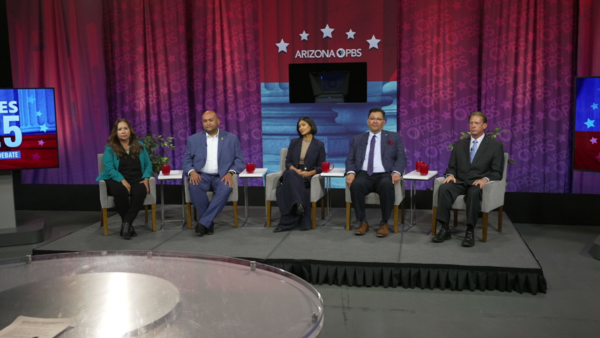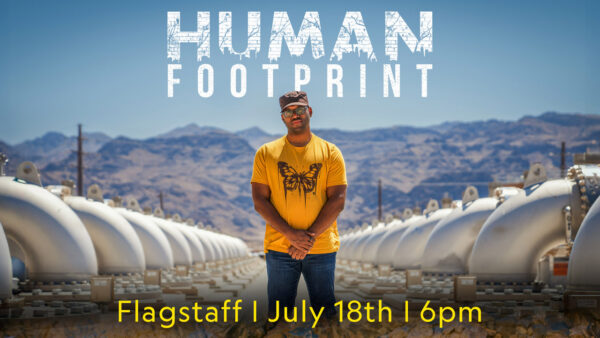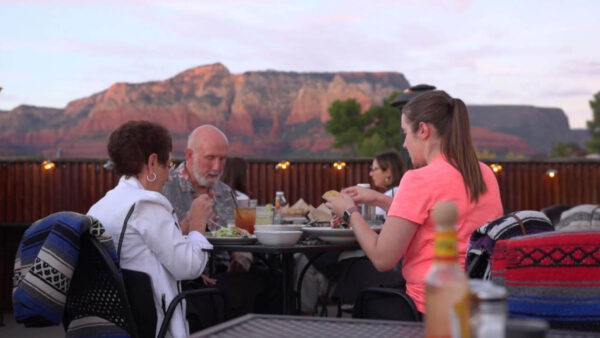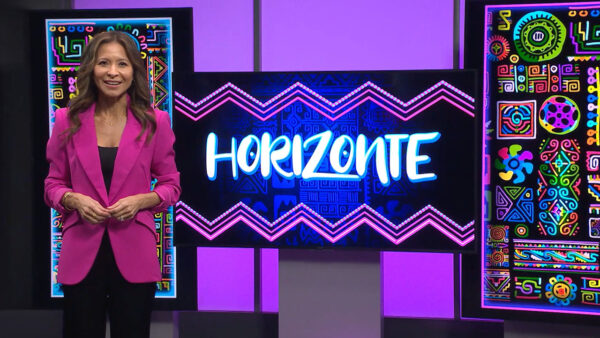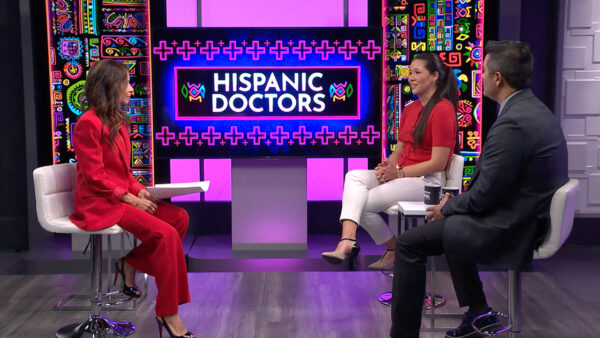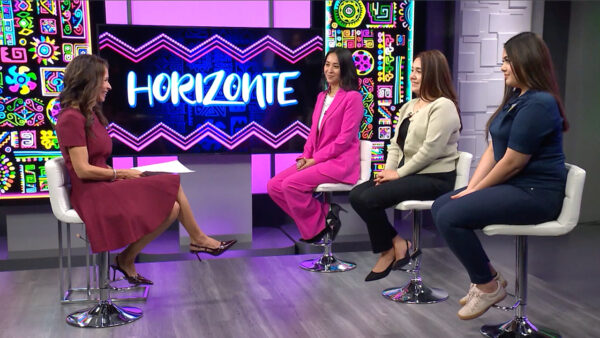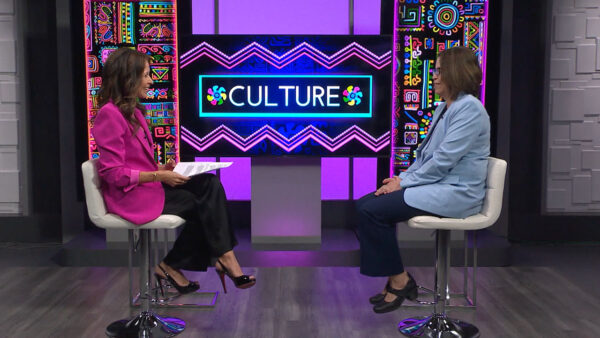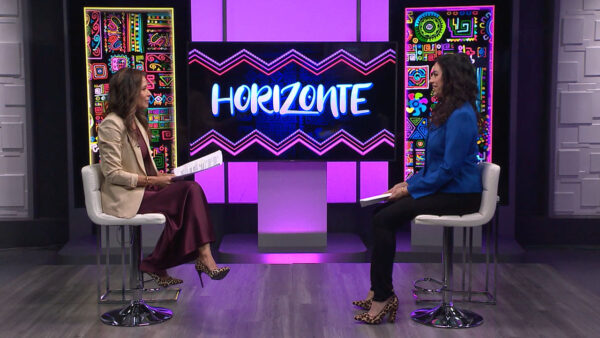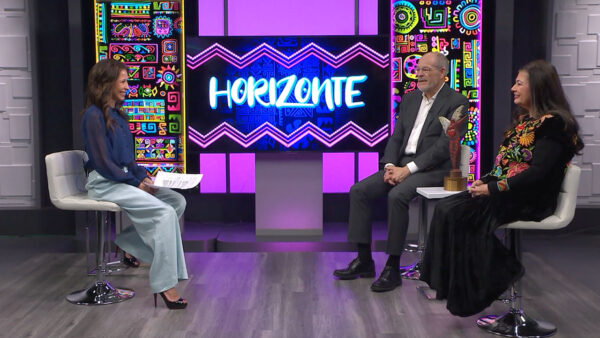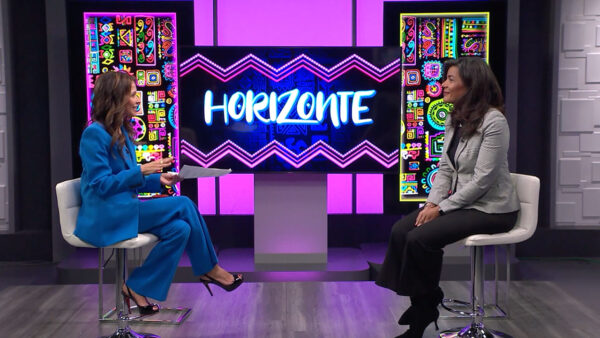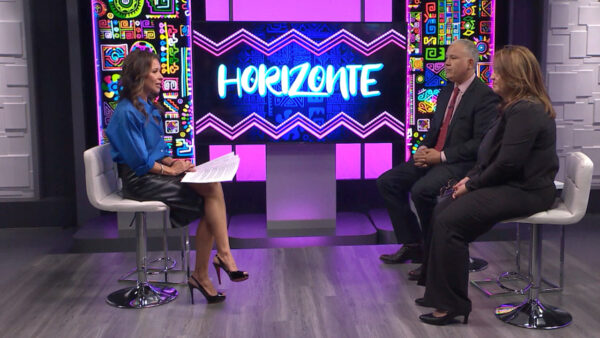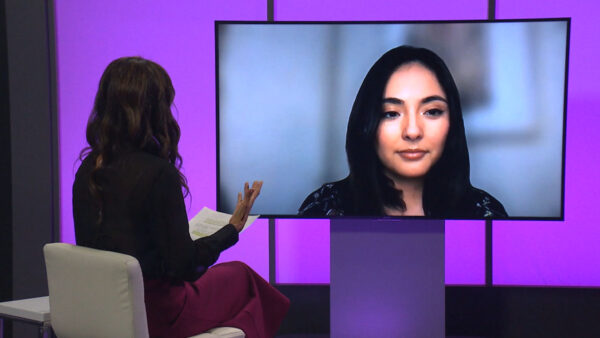Thousands of undocumented immigrant children who have entered into Southern Texas illegally were brought to Arizona for screening and processing. Gladis Molina Alt, managing attorney for The Florence Project children’s program talks about the legal process for undocumented minors who enter the U.S. alone.
José Cárdenas: Thank you for joining us. This month, busloads of immigrant children caught crossing the border illegally in Texas were being dropped off in Nogales. Also, this happened the same week as the release of hundreds of undocumented families at bus stations in Phoenix and Tucson. Joining me to talk about this is Gladis Molina, managing attorney for the Florence Project's children's program. This organization provides free legal services to men, women, and children detained in Arizona for immigration removal proceedings. Gladis, welcome to Horizonte. This is the second week in a row we've covered this topic because it's gotten a lot of attention. Some suggestion that the Obama administration is punishing Arizonans in some way, I think we dispelled that myth last week. But the number of children continues to grow. Tell us what the current situation is in connection with Nogales and what's going on there.
Gladis Molina: What we understand so far is that there is a large number of children coming into the United States, and a lot of those kids are having to sit in border patrol stations in South Texas and in Arizona, because there are no beds to transfer them to, to the Department of Health and Human Services, namely the Office of Refugee Resettlement, which is where they are supposed to go. In other words, when CBP processes them, after three days, and no more than three days, the kids are supposed to be transferred --
José Cárdenas: There's some kind of legal restriction on how long CBP can have these kids in their custody, and that's three days?
Gladis Molina: Correct, yes.
José Cárdenas: So, they have to move them. And is that part of the reason why they are moved to Arizona for processing that would then allow them to go to these other agencies?
Gladis Molina: In order to meet that requirement, CBP put together a plan, you know, the President on June 2nd said FEMA should coordinate this, but they put together a plan to have this make a CBP station in Nogales open up so that they can help process the kids into medical screenings, in order to be able to take them to emergency reception centers that are essentially being contracted right now with the Department of Defense in Oklahoma and California and in Texas.
José Cárdenas: So, what all is involved in the processing that goes on? The kids arrive in Nogales, and I understand it's about 300 a day right now?
Gladis Molina: About 300 kids a day coming into Nogales.
José Cárdenas: So they go there, they go to this processing center. It's what? I heard a reference on the radio. It's a converted Costco or something, the size of a big warehouse store.
Gladis Molina: Yeah, I'm not sure what the facility used to be or --
José Cárdenas: So they're there, and in what sense are they processed? What happens to them?
Gladis Molina: CBP conducts interviews to ask them about who they are, where they come from, why did they come, are they afraid to return? And they do paperwork. So it's, in a way, interrogations of the children about their immigration history, and why they are in the United States, and who they are here with or how they came. And then from there they do medical screenings so that they can make sure they don't have, like, tuberculosis or other diseases. Then they ship them off to shelters -- be it shelters, facilities contracted by the Office of Refugee Resettlement or the beds that are being provided through the Department of Defense.
José Cárdenas: As I understand it, whether they go to one place versus the other depends on their age, principally?
Gladis Molina: They are prioritizing. They are prioritizing younger kids to go to the ORR facilities that are established and have more services. And then they are sending older kids, 12 and over, to Department of Defense facilities, because they just require less care than a smaller child.
José Cárdenas: When we say Department of Defense facilities we're talking about military bases?
Gladis Molina: Correct.
José Cárdenas: The first group of kids who are put in custody of ORR, Office of Refugee Resettlement, what was happens to them?
Gladis Molina: They get to the ORR shelter and then they get interviewed by a social worker or a youth care worker about where their family is and what they were hoping to do in the United States, if they made it. Then they contact family members so they can go ahead and begin a process called family reunification, so that the children can be released from federal custody and they don't have to sit in detention.
José Cárdenas: So somebody gets to one of these ORR centers and says, ‘I have an aunt in Chicago.' They will contact the aunt and then send the child there?
Gladis Molina: Yeah. And the case manager will do the paperwork, and kids also get interviewed by clinicians because the kids may have suffered trauma along the way. Young girls who are raped, boys who have seen people die along the journey. And there is trauma that needs to be dealt with. So how that is dealt with is with clinical --
José Cárdenas: And some of that may have occurred in their country of origin. What we're hearing is that the reason for the increasing numbers is the level of violence in Honduras and Guatemala.
Gladis Molina: Yeah, that's correct.
José Cárdenas: And then the ones who go to the Department of Defense facilities, the military bases, basically the same thing? If they have relatives, the relatives are contacted and then they are sent to them?
Gladis Molina: Yes, from what I understand, those services are also provided there.
José Cárdenas: And then after that what happens?
Gladis Molina: Then after that the child goes live with that family relative. They continue to face deportation process, removal process. So going back right to the border patrol processing stage, they get asked questions about, you know, where they come from and whatnot. And at that moment, the information the child gives is then used by border patrol to type up notices to appear that are then filed with immigration courts. And those notices to appear are essentially charging documents, so that the children can be put into a removal or deportation process.
José Cárdenas: So, it's not like it's a free pass to stay in the United States.
Gladis Molina: No.
José Cárdenas: They are put into proceedings that may take a while, but they do have parent states and so forth.
Gladis Molina: Correct.
José Cárdenas: And is there any kind of a track record as to how many actually show up on their appointed date?
Gladis Molina: I am not aware of it. I am not aware of what the likelihood is that the children are going to come to court after they are released. I do know that having a lawyer increases the chances of that child showing up to court. I have read studies done by organizations that say that a child who has an attorney is more likely to come to court because they know where to show up, when to show up and are not getting something in the mail that says, you're supposed to go to court, and that kid doesn't understand it's a notice of hearing or even understand English to read it.
José Cárdenas: And that's where organizations like yours get involved. In connection with the removal proceedings, so for example, the kids in Nogales, at least the ones who stay, they would then be potential clients for your organization?
Gladis Molina: Right. So kids that are sent to the Office of Refugee Resettlement shelters, we provide basically your rights presentations to them. And the kids that are not able to reunify with family, then we take on their cases. Some of those cases we succeed in presenting defenses for special juvenile status. For kids with a past of abus, abandonment or neglect, some of those kids that are not able to stay in the United States through a defense in immigration court, then we go to immigration court and we ask for voluntary departure or removal, so they can be repatriated to their home country.
José Cárdenas: Physically, where would those kids be housed, the ones who are not reunited their families?
Gladis Molina: In shelters operated by the Office of Refugee Resettlement.
José Cárdenas: And have you or anybody in your organization actually physically inspected the processing center we've been talking about in Nogales?
Gladis Molina: No.
José Cárdenas: We've heard people though express some concerns about the conditions, in part, just because of the numbers of kids there. Do you know if anybody's looking into that to make sure they are being treated humanely?
Gladis Molina: I know the American Immigration Lawyers Association has been in contact with CBP to go tour the facility, but I don't know if they have been able to get into the facility.
José Cárdenas: What is the biggest myth or misconception that you think people have about what's going on and about this whole process?
Gladis Molina: The biggest misconception is that folks think that once children are processed and then they are released to family members, that somehow the kids are given a permission or a lawful permit to stay in the United States, and that is not the case. Being processed and then being allowed to go live with a family member is just a means for the federal government saying, we're not going to keep you in our custody, we're going to release you so you can be a child going through the deportation proceedings in the least restrictive setting. And quite frankly, also to save the government resources, I believe, because it takes resources to house those kids, I think. And people thinking that the kids somehow are given a permission or an immigration benefit to stay in the United States is the biggest misconception in the whole process, I think.
José Cárdenas: Well, we've done what we can to deal with some of these misconceptions. You've been very helpful this evening. Thank you for joining us on "Horizonte."
Gladis Molina: Thank you.
Gladis Molina Alt:Managing Attorney, The Florence Project;
